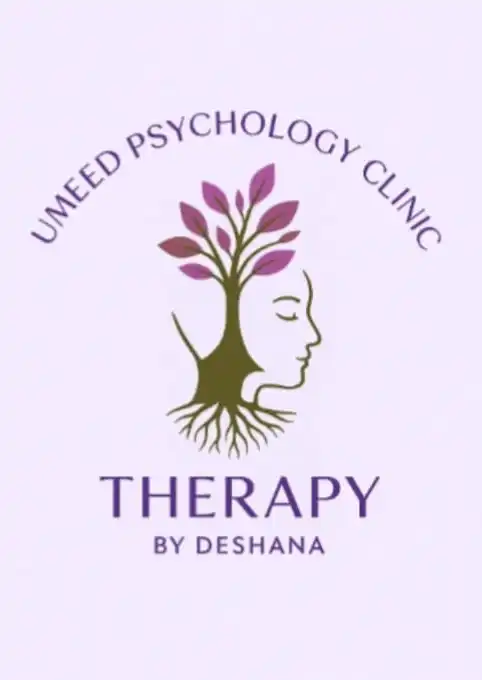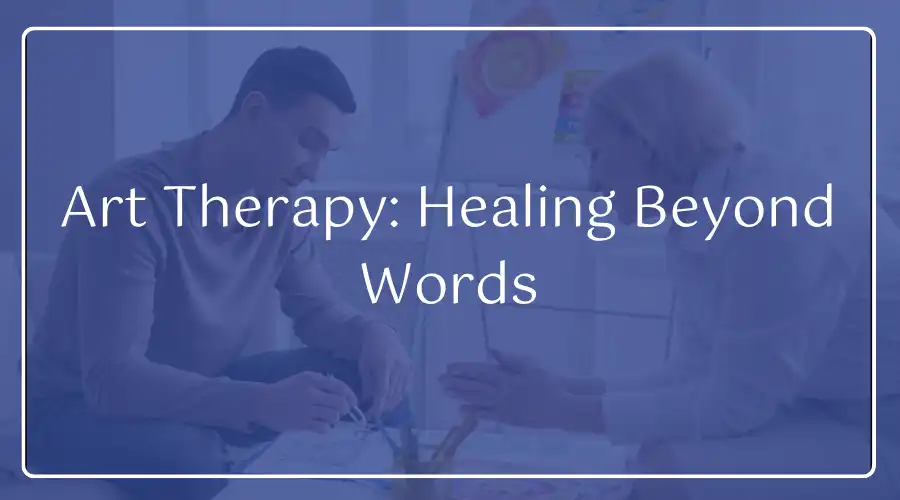- +91 7568470324

Art Therapy: Healing Beyond Words

In a world where emotions often run deeper than words can express, art becomes a bridge between the inner world and the outer one — a space where feelings find form, and healing finds voice. At Umeed Psychology Clinic, we understand that not every emotion can be spoken, and not every pain can be verbalized. This is where art therapy steps in — a gentle, powerful approach that helps individuals explore, express, and heal through creativity.
What Is Art Therapy?
Art therapy is a form of psychotherapy that uses creative expression — such as drawing, painting, sculpting, or collage-making — to help individuals communicate emotions and process experiences that might be difficult to articulate in words.
Guided by a trained art therapist, this process is not about creating “good” or “beautiful” art. Instead, it’s about using artistic expression as a pathway to self-understanding and emotional release. The colors, lines, textures, and shapes that emerge during art therapy sessions often reflect thoughts and feelings that lie beneath conscious awareness.
The Science Behind Art Therapy
The therapeutic effects of art are not just poetic — they are scientifically grounded. Research shows that engaging in creative activities activates both hemispheres of the brain. The left hemisphere, associated with logic and language, works in harmony with the right hemisphere, which governs creativity and emotion.
When this balance is achieved, individuals experience a state of flow, where self-judgment fades and expression becomes natural. Moreover, the act of creating art releases dopamine, the brain’s “feel-good” neurotransmitter, which can alleviate symptoms of anxiety, depression, and trauma.
For those struggling with emotional regulation or traumatic memories, art therapy provides a safe, non-verbal outlet that allows for emotional expression without re-traumatization.
How Art Therapy Works at Umeed Psychology Clinic
At Umeed Psychology Clinic, art therapy is a personalized and collaborative process. Each session is designed according to the client’s emotional needs, goals, and comfort level. Our therapists create a safe, non-judgmental space where individuals can explore their creativity freely.
Here’s what a typical process may look like:
- Initial Assessment – The therapist and client discuss emotional challenges, life experiences, and therapeutic goals.
- Creative Exploration – The therapist introduces artistic mediums — paints, clay, collage materials, or digital tools — based on what resonates most with the client.
- Expression Through Art – Clients are encouraged to express emotions or experiences through creative work. The process itself becomes a form of mindfulness and self-discovery.
- Reflection and Discussion – After creating the artwork, the therapist and client reflect on the piece — exploring the feelings, symbols, and insights it reveals.
- Integration – These insights are integrated into the therapeutic journey, helping clients make sense of their emotions and move toward healing.
Who Can Benefit from Art Therapy?
Art therapy can support individuals across all age groups — from children and adolescents to adults and the elderly. It is especially beneficial for those who find it challenging to express themselves verbally.
Some of the conditions and situations where art therapy can be effective include:
- Anxiety and Stress – Art offers a meditative escape, helping individuals calm their mind and channel their emotions constructively.
- Depression – Creating art fosters a sense of accomplishment and self-worth, providing a positive emotional outlet.
- Trauma and PTSD – For those who have experienced trauma, art provides a safe way to revisit and process painful memories without verbal exposure.
- Grief and Loss – Through art, individuals can honor their loved ones, externalize their sorrow, and find meaning in loss.
- Child and Adolescent Challenges – Art therapy is particularly effective for children who may not yet have the vocabulary to express complex emotions.
- Relationship Difficulties – Couples and families can use art therapy to improve communication and understanding.
- Low Self-Esteem or Identity Issues – Art becomes a mirror for self-reflection, helping individuals rediscover their strengths and values.
Healing Beyond Words: The Emotional Power of Art
Art therapy goes beyond the surface — it allows emotions to flow in colors, shapes, and textures that words cannot capture. For someone battling inner chaos, the simple act of painting a canvas can become an act of reclaiming control. For another, molding clay might serve as a tangible way to rebuild what was once broken.
At Umeed Psychology Clinic, we’ve witnessed countless moments of transformation. A teenager struggling with anxiety discovers her inner strength through abstract painting. A grieving parent finds solace in a sculpture that embodies remembrance. A survivor of trauma begins to heal by transforming pain into visual expression.
The healing lies not in the artwork itself, but in the process of creation — where silence becomes strength, and every stroke becomes a step toward emotional liberation.
Art Therapy Techniques Used at Umeed
Our therapists integrate various evidence-based art therapy techniques, such as:
- Free Drawing or Painting: Encourages spontaneous expression and emotional release.
- Guided Imagery and Art: Clients visualize specific themes or emotions and represent them through art.
- Collage and Mixed Media: Ideal for exploring identity, life goals, or past experiences.
- Sculpting and Clay Work: Useful for grounding and rebuilding a sense of self.
- Mandala Creation: A mindful practice that enhances focus, calmness, and spiritual balance.
- Art Journaling: Combines creative writing and drawing for continuous emotional tracking.
Each method serves a unique therapeutic purpose, allowing the client to explore both conscious and subconscious aspects of their psyche.
The Therapist’s Role: Guiding Without Judging
An art therapist is not an art critic — they are a facilitator of healing. At Umeed, our therapists provide gentle guidance, helping clients interpret their creations and connect them to their emotions. The emphasis is always on exploration, not evaluation.
Through empathy and expertise, the therapist helps clients discover patterns, unlock memories, and develop coping mechanisms that extend beyond the therapy room.
Why Choose Umeed Psychology Clinic for Art Therapy
At Umeed, we believe in holistic healing — integrating emotional, psychological, and creative dimensions of well-being. Our qualified therapists combine art therapy with evidence-based psychological practices such as CBT, mindfulness, and trauma-informed care.
We offer:
- A safe, inclusive environment for expression.
- Customized sessions tailored to individual emotional needs.
- Private and group art therapy programs.
- Workshops and wellness sessions that promote creativity as self-care.
At its core, Umeed (meaning hope) stands for resilience, renewal, and the belief that healing is possible — even when words fall short.
Final Thoughts
Art therapy reminds us that healing doesn’t always happen through conversation. Sometimes, it begins with a brushstroke, a burst of color, or a shape that mirrors how we feel inside. It is a journey of self-discovery — where art becomes language, and creation becomes catharsis.
At Umeed Psychology Clinic, we invite you to explore this beautiful path of healing beyond words. Because sometimes, what we cannot say… we can paint.